
This resource provides brief explanations of all the amendments that are part of the Bill of Rights.
- Subject:
- History
- Social Science
- Material Type:
- Reading
- Provider:
- Gilder Lehrman Institute of American History
- Date Added:
- 05/10/2024


This resource provides brief explanations of all the amendments that are part of the Bill of Rights.

Check out a sampling of the “don’t miss” highlights of the Supreme Court Building and the ground floor exhibits created by the Office of the Curator.
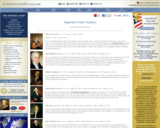
Informatinon about well-known Supremem Court justices
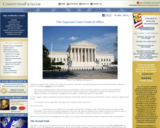
Unlike the Presidential Oath of Office, the wording of the Supreme Court Oath is not explicitly defined in the text of the United States Constitution. Learn more on this webpage.
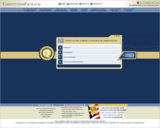
Take the Constitution quiz to find out how much you know about the Constitution of the United States of America.

These activities introduce students, teachers, and families to some of the history and symbolism featured at the Supreme Court of the United States. Recommended for grades 5-12. Downloadable PDFs are available.

The coloring book pages below highlight aspects of Court history and tradition along with some of the notable artworks and architectural features of the interior and exterior of the Supreme Court Building. We hope you have fun coloring while learning about the Court!

Look closely and take in the East and West Pediments, the Fraser statues flanking the front steps, the Bronze Doors, flagpoles, lampposts, and perimeter medallions.

Explore the highlights of the ground and first floors of the Supreme Court Building, including the John Marshall statue, spiral staircases, Great Hall, and Courtroom.

George Washington remarks on our Constitution

That all men are created equal” is a high and mighty concept, but far from the reality of Virginia in the 18th century. How do we reconcile a body of law that does not live up to our highest ideals?
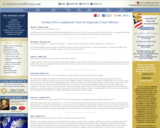
A list of 25 landmark cases in the history of the Supremem Court of the United States of America

On May 25, 1787, the fifty-five delegates to the Constitutional Convention began meeting in a room, no bigger than a large schoolroom, in Philadelphia’s State House. They posted sentries at the doors and windows to keep their "secrets from flying out." They barred the press and public, and took a vow not to reveal to anyone the words spoken there. There were speeches of two, three, and four hours. The convention, which lasted four months, took only a single eleven-day break. Explore these primary sources to learn more.
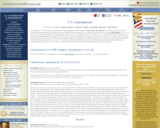
This webpage includes information about the amendments to the U.S. Constitution.
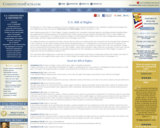
On September 25, 1789, Congress transmitted to the state Legislatures twelve proposed amendments to the Constitution. Numbers three through twelve were adopted by the states to become the United States (U.S.) Bill of Rights, effective December 15, 1791.

A list of important dates and events related to the United States Constitution

Download a number of crossword puzzles about the United States Constitution.
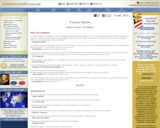
Read through a list of famous quotes about the United States Constitution.

Find definitions for key terms used in the fouding documents of the United States of America
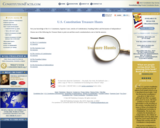
Test your knowledge of the U.S. Constitution, Supreme Court, Articles of Confederation, Founding Fathers and Declaration of Independence. Choose from five Treasure Hunts to print out and then search constitutionfacts.com to find the answers.